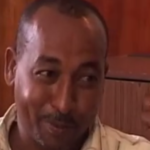If you are a politician, the Dos and Donts of building a dam all depend on what the purpose of building a dam is. You can build a dam for propaganda purposes, to ensure that your followers are impressed by your hard-work and initiative and continue to support you. In Tigrinya, this is called “poletikawi halki.” Or, you can build a dam to ensure that you have adequate water to meet your annual water supply needs and, ultimately, food security goals. In any language, this is called admirable. Its dam if you do, dam if you don’t.
What is happening in Eritrea? Well, for that, we have to consult an agricultural engineer, Fisseha Negusse, who was part of the dam construction in Eritrea. But wait, you say: isn’t it impossible to speak with candor in Eritrea particularly if you are going to be critical of the government? Right you are. So you have to make sure the agricultural engineer is an exile. But wait, you say again, if the exile is an asylum-seeker in Ethiopia, how do I know that he is not saying what his hosts, enemies of the State of Eritrea, want him to say? Right you are.
So, here’s the test and let’s see if the Dos and Donts are being met in Eritrea:
Do not have the president of the country as the chief engineer, since he is (and sorry to say this but it is relevant) he is a college dropout from an engineering school. (that is the case in Eritrea.)
Do conduct a feasibility study before you begin design. (that is not the case in Eritrea.)
Don’t exaggerate: do accurately describe the capacity of the dam in cubic kilograms. (Grossly exaggerated in Eritrea.)
Do pay attention to how much of the water will evaporate if the reservoir is in a hot place. (not the case in Eritrea.)
Do ensure that the purpose of the reservoir is for water supply (drinking) or irrigation in advance. (not the case in Eritrea)
Do ensure that, when necessary, you have the energy supply to pump the water. (not the case in Eritrea.)
Do not ignore the engineering part: having an intake structure, spillway and outlet valves. (not the case in Eritrea for the “dams”)
Actually, this is the real test: 8 years after their launch, have the “dams” (lagoons, reservoirs) actually been put to the test and are they doing what they are supposed to be doing (irrigation, drinking water supply)?
Test cases:
Kerkebet Dam
Omhajjer Dam
Alighider Lagoon
Adi Halo Dam
All beautiful, and big, and impressive-looking, specially to Eritreans who miss their homeland and wish for it all the best. The hard question that needs to be answered: how many of them are actually doing what they were designed to do? And if few or none are, shouldn’t they be called PropaganDAM?
https://youtu.be/jTLHzww-ViY


Leave A Reply